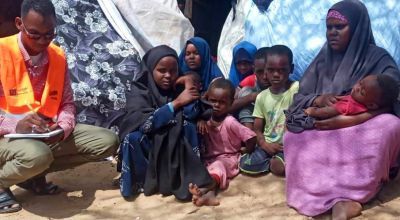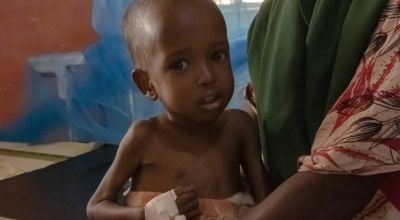
Read our 2023 annual report

Knowledge Hub
Once again, Somalia has been named the hungriest country in the world, per the 2024 Global Hunger Index, after previously holding this rank in 2021.
The country has faced a protracted hunger crisis driven by ongoing conflict, economic challenges, and the climate crisis — all in the context of a government that has limited capacity for responding to these issues. This has left over half of the population (51.3%) undernourished, the second-highest rate of undernourishment in the world in 2024 (second only to North Korea). It has the third-highest child mortality rate (10.6%), and the seventh-highest child wasting rate (11.8%).
In the last decade, the country has also faced famine risks on three separate occasions in 2017, 2022, and 2023. And while early-warning systems, humanitarian response, and recent rains have offset these risks and helped Somalis to make significant progress in reducing hunger rates since 2000, the situation remains dire, particularly for the 4.8 million people that the UN estimates will need nutrition support this year.
Here are five things you need to know about hunger in Somalia in 2024.
1. What’s causing hunger in Somalia?
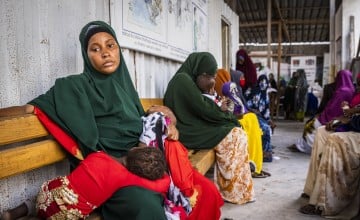
This is a complicated question to answer, because it’s not just one issue. Somalia has been locked in a cycle of crisis over the last few decades. Ongoing conflict and political instability have weakened infrastructure as well as the ability on the government’s part to respond to these crises, which only adds to the impact for people living in the most vulnerable situations. This insecurity leaves many families to move into displacement camps, abandoning their farms and entering situations where resources (including food assistance) are limited.
Additionally, Somalia is on the frontlines of the climate crisis. It has faced decades of drought — including the most devastating drought to hit the Horn of Africa region in 40 years. While rains eventually arrived in East Africa in the spring of 2023 (known as the Gu rains), they also triggered widespread flooding after so many dry seasons, and did the same during the country’s late-autumn/early winter rain season (the Deyr rains).
2. 80% of Somalis rely on agriculture and pastoralism to feed their families
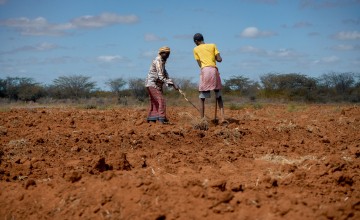
The climate aspect is especially important to understanding hunger in Somalia. During last year’s Deyr season, roughly one-quarter of the population was faced with flood-driven food shortages.
“Somalia was brought to the brink of famine following the worst drought in 40 years,” Concern’s Emergency Country Coordinator Joshua Pollard said last December. “That has now been followed by once-in-a-hundred-years flooding. The impact has been colossal.”
This year’s Gu rains were also erratic, reports the Integrated Food Security Phase Classification (IPC), which monitors food security levels and famine risks around the world. Some areas were exposed to flooding once again, while others saw a reduction in crop production. Agriculture activities (a sector that employs 80% of Somalis) also saw further interruption due to conflict and instability in key regions.
3. While food may be available, it’s not always affordable
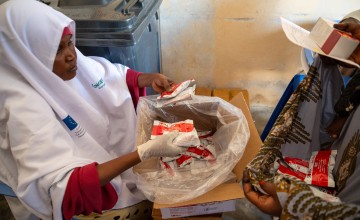
The food crisis triggered by the conflict in Ukraine hit Somalia especially hard in 2022. Prior to the onset of the conflict, more than 90% of the country’s grain was imported from Ukraine and Russia. The onset of the war led to a shortage of food supplies reaching the country at a critical time — at the height of the Horn of Africa drought, with a very real risk of famine facing hundreds of thousands of Somalis.
While supplies were soon able to reach the country, it was also hit by inflation driven by the conflict’s effects on global food and fuel trade. As Concern Somalia Country Director Abdi-Rashid Haji Nur explained of the situation: “Although you have food in the market, the ability of people in those areas to buy or get access to that food is very limited.”
Studies have shown that food price inflation in Somalia is also linked to conflict within the country. These inflation peaks raise the costs of available staples to a point that most civilians can’t afford basics like rice and flour. These prices are also sensitive to other emergencies, such as the 2023 Deyr floods. While prices have declined relative to their summer 2022 peaks, this deflation remains a two-steps-forward-one-step-back process that hits economically-vulnerable families and communities the hardest.
4. Hunger rates are expected to rise through the end of the year
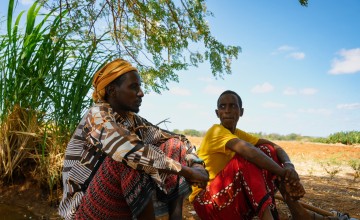
In the final months of 2024, the biggest concern around food security in Somalia is La Niña. The extreme rains from last year’s Deyr season were influenced in part by El Niño (a warming phase of water temperatures around the Equator). This year, its counterpart, La Niña (a cooling phase of water temperatures), is expected to lead to another below-average rainfall in the Deyr period, now through December. These phenomena are natural and not an effect of climate change, but the climate crisis has led to more intense effects.
With weather forecasts indicating an 80% certainty in this year’s La Niña, the IPC estimates an increase in hunger rates in Somalia by 22% compared to this summer. In raw numbers, that means 4.4 million people facing high levels of food insecurity, up from 3.6 million. This includes an additional 551,000 people facing crisis levels of food insecurity (IPC Level 3) and an additional 258,000 people facing emergency levels of food insecurity (IPC Level 4), one level before famine or famine-like conditions. Without an adequate response, organisations like the World Food Programme are warning that we could see circumstances similar to 2022 and 2023 once again.
5. Children are especially vulnerable

When a food crisis hits, children are among the most vulnerable, and Somalia is no exception to this rule. This is in part because children’s immune systems are still developing. In particular, the first 1,000 days between conception and a child’s second birthday make an especially critical window to ensure that they receive all of the nutrients they require for a lifetime of health.
Absent of that, young children become especially susceptible to diseases and illnesses that are not necessarily fatal, including diarrhoea, malaria, and cholera. Sadly, this is usually what kills children during a hunger crisis rather than the hunger itself. Somalia has a high burden of communicable disease and low access to health and nutritional care. It also lacks adequate clean water and sanitation infrastructure. With the IPC estimating that 1.6 million children under the age of 5 will be diagnosed with acute malnutrition between August 2024 and July 2025, these circumstances present a high risk.
Hunger in Somalia: Concern’s response
Concern has been in Somalia since 1986. Addressing the causes of hunger in the country continues to be central to our work in the country, with both emergency interventions and longer-term projects designed to build the resilience of affected communities (especially those who are in protracted displacement). We are proud to be UNICEF’s main nutrition partner in the Wadajir district.
A key pillar of our response is unconditional cash transfers (delivered electronically via mobile phones). These enable families to quickly receive money to buy what they most need from local markets, including food and other essentials. Between January 2022 and the end of March 2024, Concern Worldwide distributed €23 million (provided by the European Union) to families, which in turn saved the lives of over 617,000 people.
Our resilience work has also helped many of Somalia’s farmers and pastoralists to respond to the challenges of climate change. Our Building Resilient Communities in Somalia (BRCiS) programme is currently working to reach 60,000 people with an ECHO-funded restoration project designed to improve harvest yield and quality.



